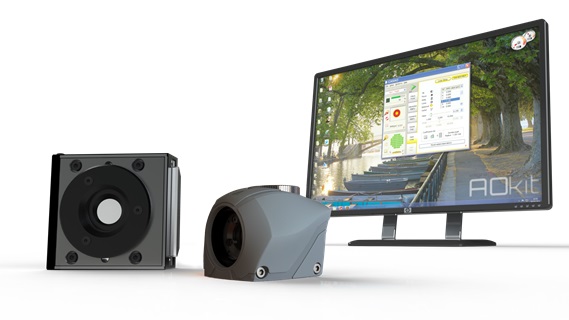STED microscopy Increases the resolution
Home / Applications / Adaptive optics for microscopy / STED microscopy resolution increase
Stimulated emission depletion (STED) microscopy is a variant of super resolution microscopy, for which Point Spread Function (PSF) quality is very important. In this microscopy technique, the gaussian excitation beam is centered with the donut-shaped quenching STED beam, leaving only the central part of the gaussian beam unquenched. Aberrations distort the STED beam, resulting in the quenching of the excitation beam becoming inhomogeneous. This leads to artifacts and a loss of resolution. This method is even more sensitive to aberrations in the 3D variant where the STED beam has a more complex shape. The STED microscopy resolution increase can therefore provide much sharper images which should will allow new findings and better labeling of biological sampling .
Relevant products
AO Solution
AOKit Bio is a set of adaptive optics components composed of a wavefront sensor, a deformable mirror or phase modulator, and WaveTune adaptive optics software. The adaptive optics loop can be integrated with different phase modulators, such as deformable mirrors and spatial light modulators

